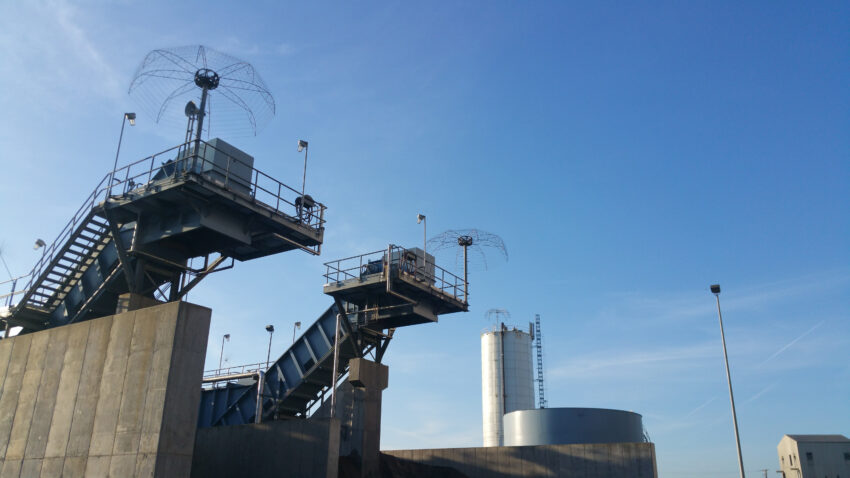Oil and gas facilities, including refineries, produced water / Saltwater Disposal (SWD) facilities, upstream/midstream operations, and petrochemical plants are among the most vulnerable to fires, explosions, and operational disruptions caused by direct lightning strikes and their secondary effects. Even in areas with infrequent thunderstorms, severe lightning events can still occur, leading to catastrophic damage, injury, downtime, fines, and negative impact to corporate reputation.
When this occurs, the financial consequences can be devastating. In industrial settings, a single strike can ignite fires, destroy valuable assets, and lead to costly downtime and environmental damage.
This is leading many oil and gas facilities to adopt lightning defense strategies designed to protect structures, equipment, and personnel. However, with many technological advances since the invention of the Franklin Lightning Rod more than 250 years ago, navigating the maze of potential lightning protection solutions can be daunting.
Lightning defense is a specialized body of knowledge that has accumulated for over 200 years. Broadly speaking, lightning defense encompasses two key approaches: lightning protection and lightning avoidance, such as Charge Transfer technologies. Proper grounding and surge protection are also critical.
Due to the wide range of available technologies, mounting an effective defense against lightning-related threats typically requires a tailored strategy that integrates multiple solutions, each having its own specific purpose for minimizing damage or avoiding it altogether. The optimal combination depends on the specific site conditions and the nature of the operation.
To navigate this complexity effectively, it is essential to engage qualified lightning protection experts who can conduct thorough site evaluations, identify and prioritize vulnerabilities, and recommend appropriate protection solutions.
“Rather than offering a one-size-fits-all solution, lightning protection and mitigation recommendations should be tailored to a facility’s unique vulnerabilities, whether that involves bonding solutions for storage tanks, direct strike avoidance, secondary damage caused by a nearby strike or grounding improvements,” says Mike McMahon, chief executive officer at Lightning Eliminators & Consultants, Inc. (LEC), a pioneer in the field of lightning protection in since 1971.
According to McMahon, LEC engineering and sales engineers have a combined over 160 years of experience in lightning protection. Today, LEC’s solutions protect critical operations and structures for some of the world’s most recognized companies, including Federal Express, UPS, Marathon Petroleum, Chevron, ExxonMobil, Telluride Ski Resort, and thousands more.
McMahon says the appropriate combination of solutions can only be determined through a comprehensive evaluation of each facility’s current protection measures, grounding systems, and overall risk exposure.
“Understanding a facility’s past issues, vulnerabilities, and protection goals helps determine whether the solution should focus on grounding enhancements, surge protection, direct strike avoidance, secondary damage from a nearby strike, or a combination of all three,” says McMahon.
By conducting a thorough site assessment, LEC helps facilities identify vulnerabilities and implement customized mitigation strategies, whether that means improving grounding, adding targeted surge protection, or implementing direct strike mitigation solutions.
For more information: call 303-447-2828; email info@lecglobal.com; visit lightningprotection.com; or write to Lightning Eliminators & Consultants, Inc. (LEC) at 6687 Arapahoe Rd. Boulder, CO 80303, USA.

